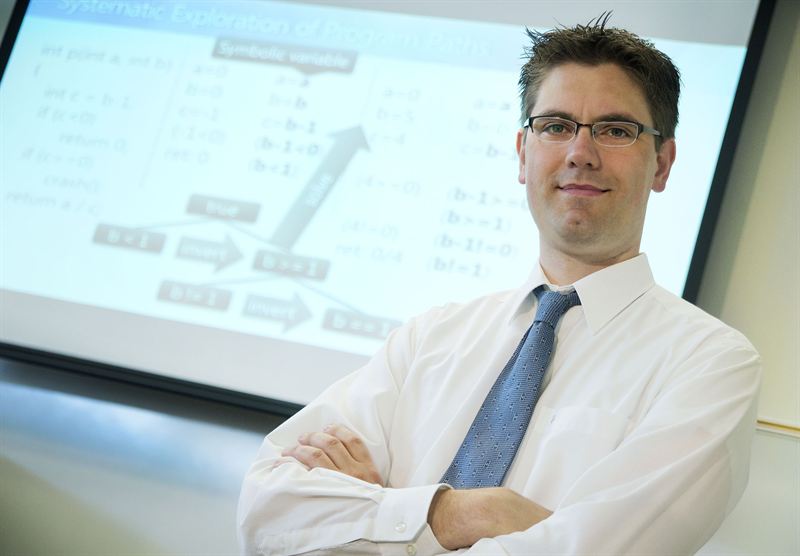New UT Arlington-developed product could help concepts become working apps

Designing mobile applications for phones and other devices requires a handoff between graphic designers and programmers that can be cumbersome and time-consuming.
However, a team of researchers at The University of Texas at Arlington has developed a computer program to automatically create a working app from an artist’s concepts. The product, called PixeltoApp, may soon enter the marketplace, aided by a National Science Foundation I-Corps grant.
The idea is the brainchild of doctoral candidate Tony Nguyen, who noticed a possible opportunity for improvements in development during an internship at Google.
Nguyen, who now works at Google and will soon graduate from UT Arlington, developed a technique for automatic conversion of screen designs to apps that creates user interfaces using information obtained from images. The process averages nine seconds.
“I watched how long the activation process took to complete, and I wondered if I could develop a tool that could eliminate some of the work and allow developers to focus on tasks that only humans can do,” Nguyen said. “It’s special that we’re trying to take it to market, because it’s useful, and now other people see that it has value.”
According to Christoph Csallner, an associate professor in the Computer Science and Engineering Department and the team’s primary investigator, experiments on 488 screenshots of more than 100 cellphone apps using Nguyen’s prototype were similar to the originals.
UTA computer science master’s student Siva Balasubramania is the team’s entrepreneurial lead. He is analyzing the product’s market fit and will design a business model around it based on feedback from customers he has targeted for initial testing.
“Once we finalize our plan, we’ll use tools such as LinkedIn to interact with potential customers and ensure that we are designing the product to meet their needs. We want to know problems they’ve encountered, solutions they’ve adopted, and who is in a position to decide next steps,” Balasubramania said.
Khosrow Behbehani, dean of the UT Arlington College of Engineering, applauded the team’s efforts to bring PixeltoApp to market.
“The core of engineering is to make life better for humans,” Behbehani said. “Inventions such as PixeltoApp, which cuts hours from a tedious task and frees a programmer to complete more important tasks, are a fine example of how our faculty and students are applying their knowledge to this idea.”
I-Corps grants were developed by the NSF to boost innovation in research. Project teams have access to resources to help determine how and whether to make a product commercially available to consumers. Each team must have a primary investigator, a student entrepreneurial lead and an industry mentor, in this case UTA alumnus and Numerex Chief Technology Officer Jeff Smith. Smith is also co-founder of UBlip and founder of on-ramp technologies and SensorLogic.
About The University of Texas at Arlington
The University of Texas at Arlington is a comprehensive research institution of more than 51,000 students in campus-based and online degree programs and is the second largest institution in The University of Texas System. The Chronicle of Higher Education ranked UT Arlington as one of the 20 fastest-growing public research universities in the nation in 2014. U.S. News & World Report ranks UT Arlington fifth in the nation for undergraduate diversity. The University is a Hispanic-Serving Institution and is ranked as a “Best for Vets” college by Military Times magazine. Visit www.uta.edu to learn more, and find UT Arlington rankings and recognition at www.uta.edu/uta/about/rankings.php.
###
-- Written by Jeremy Agor
Tags:


